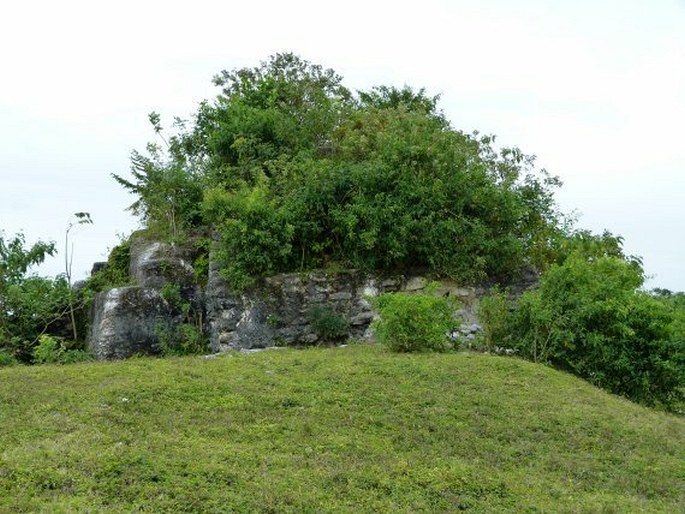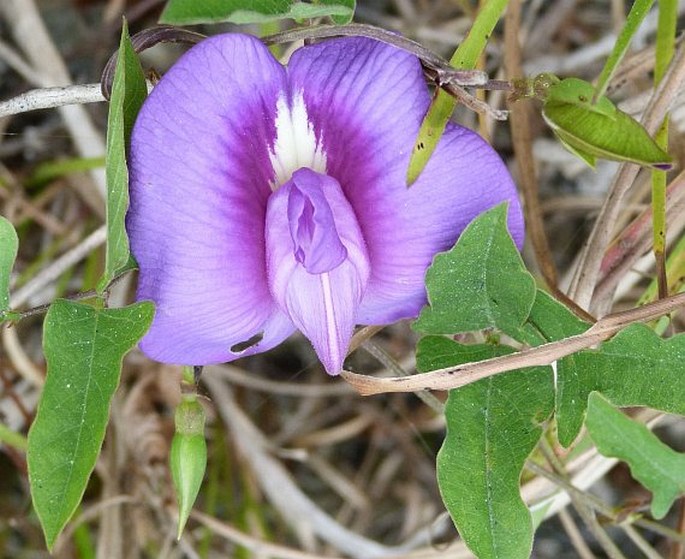Syn.: Bradburya schottii Millsp.
Family: Fabaceae Lindl.

Distribution: México (Campeche, Chiapas, Quintana Roo, Yucatán), Guatemala (Petén), Belize (Corozal and Orange Walk), the Greater Antilles, Ecuador (coastal region), Bolivia (Santa Cruz), Venezuela, and Brazil (Bahia, Ceará, Maranhão).
Ecology: It grows in tropical forests and mangrove. Blooms from October to March.

Description: Vine, stems subangular, striate, pubescent, glabrescent with age. Leaves 3-foliolate, 5.5–17 cm long; stipules 5–8 mm long; petioles 3–7 cm long, leaflets ovate-rhombic or deltoid, rarely ovate, 3–8.5 cm long, 2–6.5 cm wide, apex acute, glabrous on both surface. Inflorescences axillary, solitary or occasionally paired, 2–8.5 cm long, glabrous or pilose; calyx campanulate, 4–5 mm long, slightly pilose, calyx tube 2–3 mm long, teeth subtriangular; flowers 2.5–3 cm long, violet to purplish-red with central white medial stripe, standard with a short spur, wings subequal in length to the keel petals. The fruit is a legume, 9–16.5 cm long, 0.6–0.7 cm wide, glabrous.
Use: It is used as a medicinal plant, as well as to feed animals.
Note: The genus Centrosema includes about 32 species, which occur in temperate and tropical America.


These images were taken in Belize, Orange Walk (by Jindřiška Vančurová, February 20, 2015).


